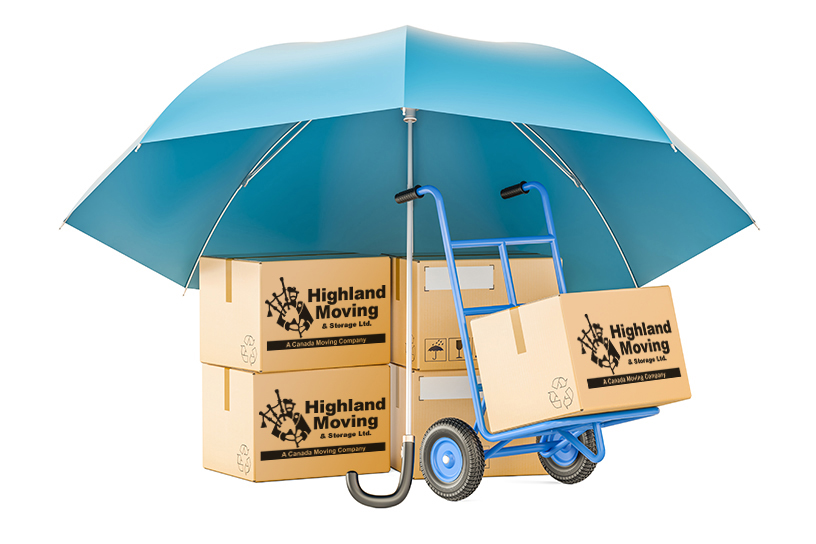Liability of Movers and Consumers
The Canadian Association of Movers (CAM) just released an article explaining insurance and the liability of movers and consumers in Canada.
The Canadian Association of Movers (CAM): Consumers Must Take Steps to Protect their Goods in Transit
MISSISSAUGA, ON–(Marketwired – June 23, 2016) – Moving a home filled with furniture and fragile property to a destination without any scratches, breakage or loss is the sign of a reputable mover. But damage to a customer’s goods can occur even with the best trained movers. Now imagine what happens to goods if they are moved carelessly by untrained, scam operators using poor equipment, without insurance!
Who is responsible for loss or damage is the most hotly-contested issue in moving complaints. Consumers need to recognize the risks, understand who’s liable and take steps to protect themselves. The Canadian Association of Movers (CAM) has some advice for consumers.
A homeowner’s insurance probably does not cover the household goods in transit. It’s important that consumers understand what the mover will do in the event of a problem. The consumer must ask important questions and get the answers in writing! They need to ask what happens if a chair is broken, the contents of a box that they packed are damaged, the contents of a box that the mover packed are damaged or their fine artwork is lost.
The liability for loss or damage is shared between the consumer and the mover. In law, a mover’s liability is only $0.60 per pound per article moved and the consumer assumes the remainder of the risk. This means that for a 50-pound TV the mover’s liability is $30. This coverage is generally not sufficient to protect the customer. Household goods, on average, are worth $10 per pound or more.
A reputable mover will offer to accept the customer’s risk for a fee or include this coverage in the price of the move. The fee may be based on either the value that the customer declares for the goods or the $10 per pound average.
The mover is not liable for loss of or damage to contents of customer-packed boxes unless there is negligence by the mover.
If the consumer has to file a claim for lost or damaged articles, it’s the mover’s option whether to arrange for repair or replacement within limits of the mover’s liability.

A mover is only required to replace or repair the lost or damaged piece or pieces of a set — not the complete set. The mover is not liable for damage to mechanical, electronic or other operations of articles such as radios, clocks, appliances and musical instruments, irrespective of who packed or unpacked them, unless the mover performed or arranged for servicing and preparation of these articles prior to the move. Neither is the mover liable for deterioration of or damage to perishables like food or plants. Consumers need to remember that their computer is replaceable but the data it contains are not. So it should be backed up and, at minimum, the backup carried by the consumer, if not the entire computer.
Movers are only liable for goods that are disclosed to the mover on the face of the contract — the Bill of Lading. If items are carried by the mover without knowledge and the customer claims loss or damage, the mover cannot be held liable.
Consumers should not put jewelry, money, stocks/bonds and important documents in with the household shipment, but should carry these themselves. Items of extraordinary value should be appraised before shipping to ensure that their valuation is understood by both the mover and consumer.
Consumers must remember to ask for an explanation of their risks and the steps the mover will take to reduce the risk of loss or damage. It’s easier to fix a problem before it happens than to try to get compensation after the fact. They should get all agreements with the mover in writing.
And finally, the best protection in reducing risk is to hire a reputable mover. Consumers can contact CAM for assistance in hiring a reputable mover who will provide professional moving services — a mover that subscribes to CAM’s code of ethics, meets CAM’s business standards and commits to mediation in the unlikely event of a dispute.
CAM works to remove rogues that are harming Canadian consumers and to assist consumers in finding reputable movers that won’t cheat and abuse them. As part of its Reputable Mover Strategy, CAM is working to educate consumers about the pitfalls of using rogue businesses and about how to find a professional moving company. Good consumer relations and an industry with a positive reputation are in everyone’s interest.
For further information: Contact the Canadian Association of Movers, Canada’s moving industry trade association.
CAM helps consumers by identifying good movers and monitoring movers’ performance. Consumers can contact CAM at 1-866-860-0065; visit CAM’s website,www.mover.net; fax enquiry to 905-756-1115; mail to PO Box 26004, RPO Churchill, Mississauga, ON, Canada L5L 5W7.
Contact Us to Request Your FREE Moving Estimate!


